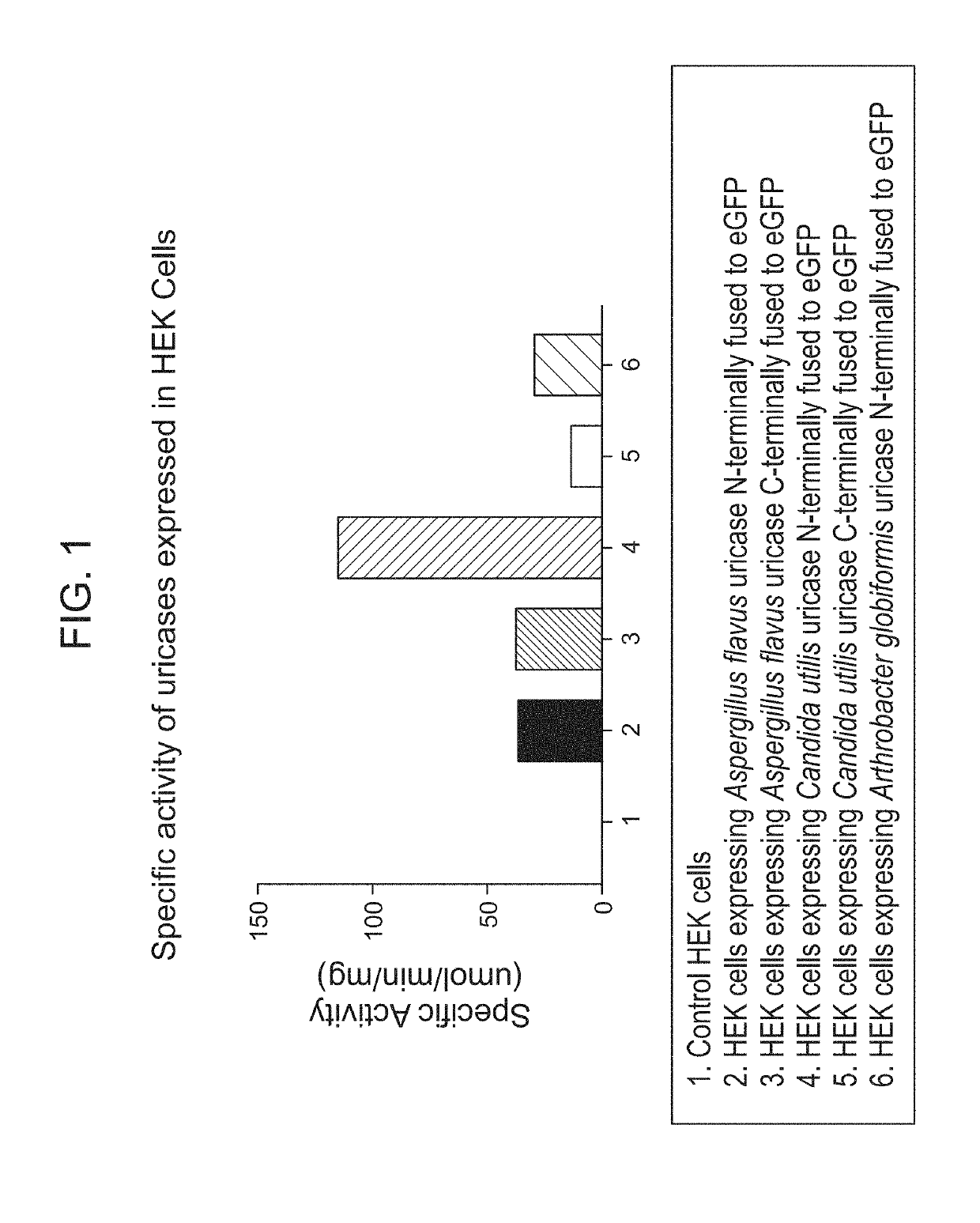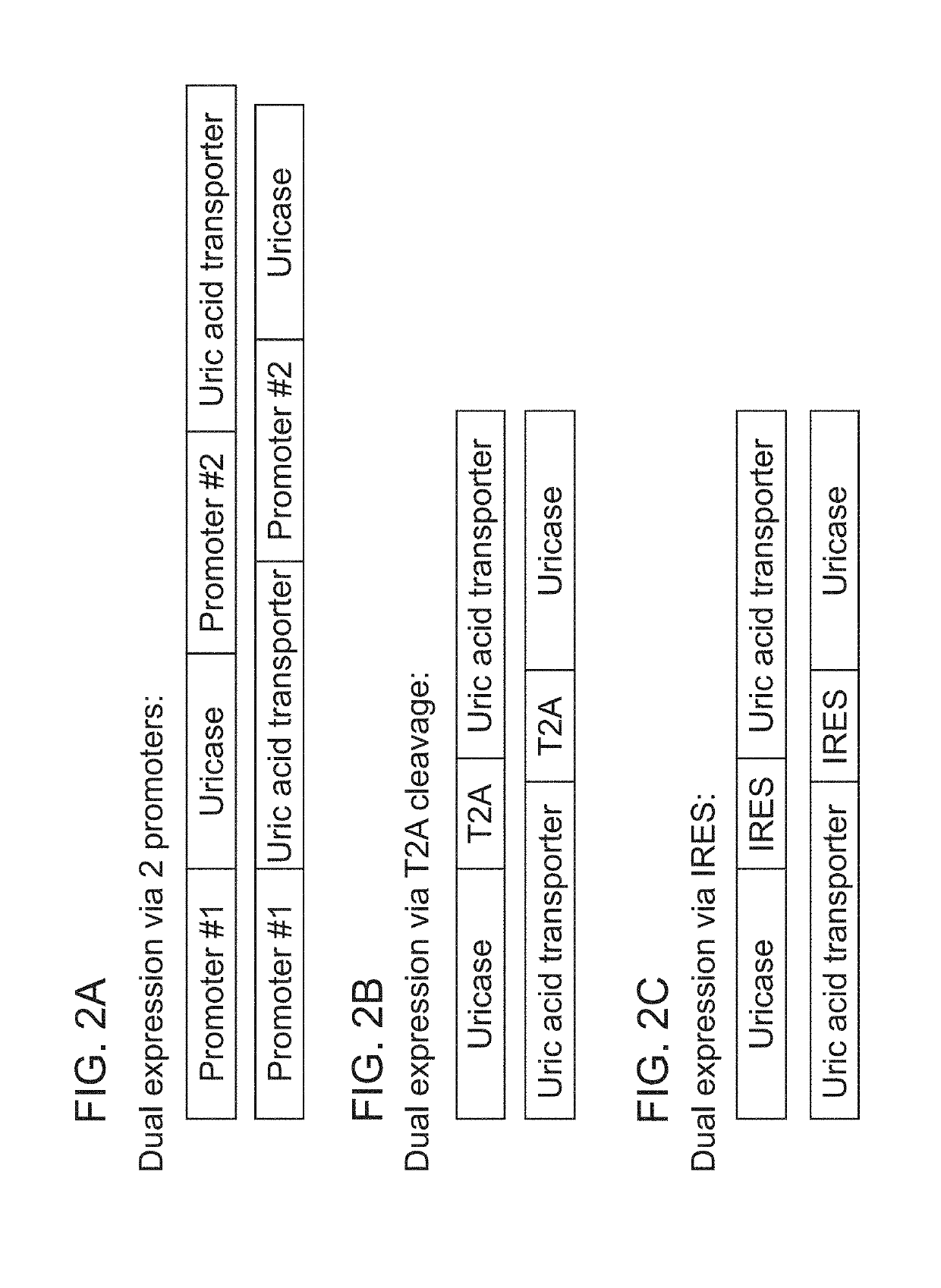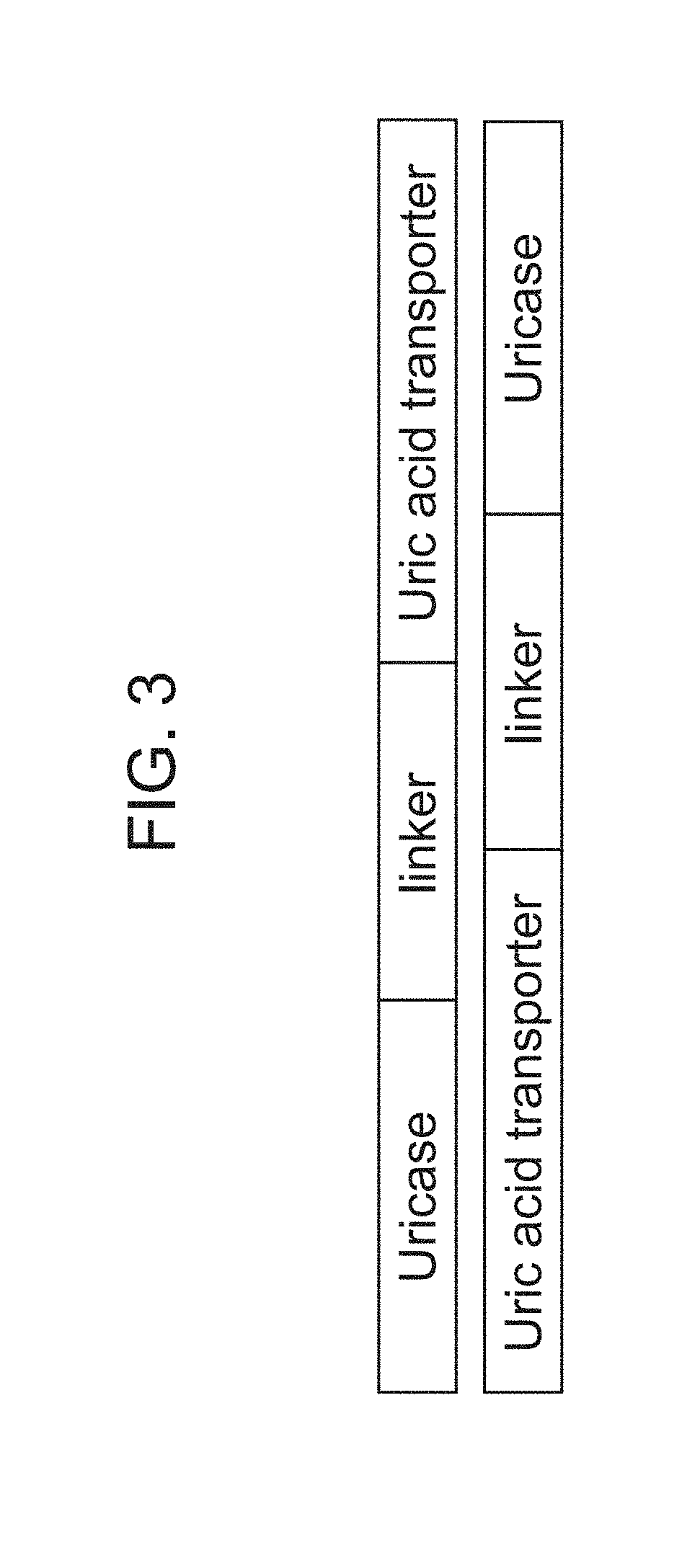Therapeutic cell systems and methods for treating hyperuricemia and gout
a technology of therapeutic cells and gout, applied in the field of therapeutic cell systems and methods for treating hyperuricemia and gout, can solve the problems of increased risk of kidney dysfunction and cardiovascular disease, intermittent attacks of severe pain and kidney damage, and nodules that are disfiguring, etc., and achieve the effect of reducing the immune reaction
- Summary
- Abstract
- Description
- Claims
- Application Information
AI Technical Summary
Benefits of technology
Problems solved by technology
Method used
Image
Examples
example 1
Assessment of Uricase Activity in HEK-293T Cells
[0521]Uricases from different species have different pH requirements for optimal activity. The goal of this study was to identify a uricase that has as high activity as possible at neutral pH when expressed in HEK-293T cells. GFP-fused uricases from Candida utilis, Aspergillus flavus, and Arthrobacter globiformis were expressed in human embryonic kidney cells (HEK-293T). Uricase expression was quantified by determining the mean fluorescence intensity of GFP fluorescence in uricase expressing cells and comparing the fluorescence with that of GFP-conjugated beads. The activity of the expressed uricase was determined by incubating HEK-293T cell lysate with 500 uM uric acid in pH 7.4 buffer and tracking the degradation of uric acid over time.
[0522]Combining activity data with quantified expression, the specific activity of uricases expressed in the HEK-293T cells was determined, as shown in FIG. 1. From the 3 uricases tested, uricase from ...
example 2
Generation of Erythroid Cells Genetically Engineered to Comprise Uricase
Production of Lentiviral Vector
[0523]A lentiviral vector is constructed with a gene encoding uricase under the control of the MSCV promoter. Lentivirus is produced in HEK-293T cells by transfecting the cells with pPACKH1 (System Biosciences) or in-house made packaging vector mix and the lentiviral vector using TransIT-LT1 transfection reagent (Mirus). After 12-14 hour incubation, cells are placed in fresh culturing medium. The virus supernatant is collected 48 hours post-medium change by centrifugation at 1,500 rpm for 5 minutes. After collection of viral supernatant, the virus is concentrated by ultracentrifugation or tangential flow filtration (TFF) and ultracentrifugation. The supernatant is collected, filtered through 0.45 um filter, and frozen in aliquots in −80° C.
Expansion and Differentiation of Erythroid Cells
[0524]Human CD34+ cells derived from mobilized peripheral blood cells from normal human donors a...
example 3
Generation of Erythroid Cells Genetically Engineered to Comprise Uric Acid Transporter
Production of Lentiviral Vector
[0527]A lentiviral vector is constructed with a gene encoding uric acid transporter under the control of the MSCV promoter. Lentivirus is produced in HEK-293T cells by transfecting the cells with pPACKH1 (System Biosciences) or in-house made packaging vector mix and the constructed lentiviral vector using TransIT-LT1 transfection reagent (Mirus). After 12-14 hour incubation, cells are placed in fresh culturing medium. The virus supernatant is collected 48 hours post-medium change by centrifugation at 1,500 rpm for 5 minutes. After collection of viral supernatant, the virus is concentrated by ultracentrifugation or tangential flow filtration (TFF) and ultracentrifugation. The supernatant is collected, filtered through 0.45 um filter, and frozen in aliquots in −80° C.
Expansion and Differentiation of Erythroid Cells
[0528]Human CD34+ cells derived from mobilized periphera...
PUM
| Property | Measurement | Unit |
|---|---|---|
| uric acid | aaaaa | aaaaa |
Abstract
Description
Claims
Application Information
 Login to View More
Login to View More - R&D
- Intellectual Property
- Life Sciences
- Materials
- Tech Scout
- Unparalleled Data Quality
- Higher Quality Content
- 60% Fewer Hallucinations
Browse by: Latest US Patents, China's latest patents, Technical Efficacy Thesaurus, Application Domain, Technology Topic, Popular Technical Reports.
© 2025 PatSnap. All rights reserved.Legal|Privacy policy|Modern Slavery Act Transparency Statement|Sitemap|About US| Contact US: help@patsnap.com



